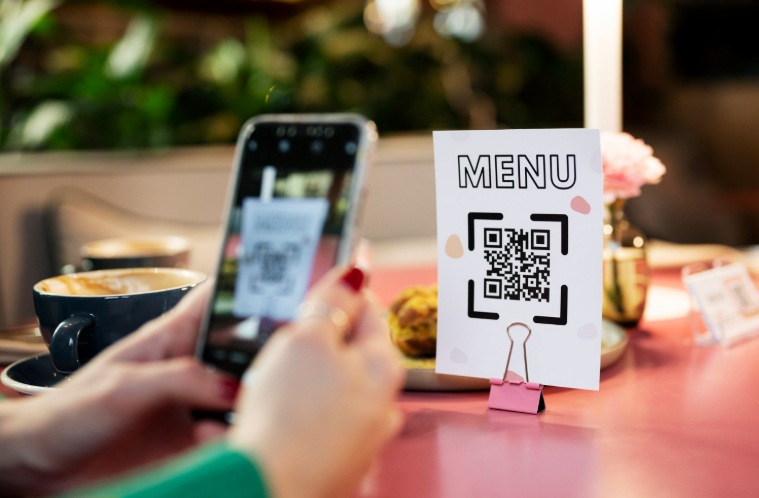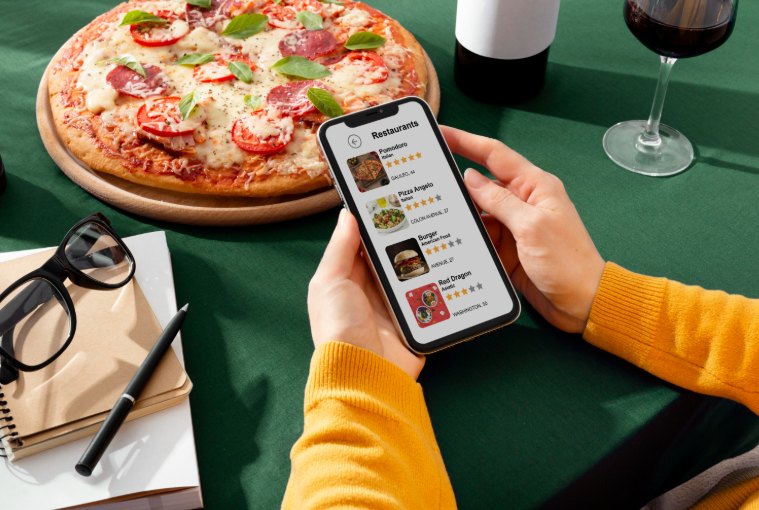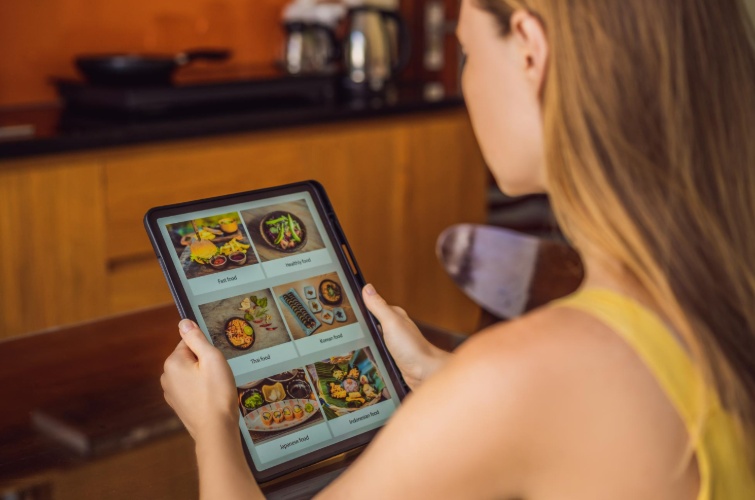Using Technology To Access Menus in Restaurants

Walk into any restaurant these days, and you’ll likely spot a small QR code sign sitting next to the salt and pepper. What started as a pandemic necessity has become the new normal, fundamentally changing how we browse, order, and pay for our meals. This technological shift goes far beyond simply replacing paper menus—it’s reshaping the entire dining experience.
How Digital Menus Took Over
The numbers tell a compelling story. Recent surveys indicate that 78% of diners now prefer QR code menus over traditional paper menus. Why? The answer lies in convenience and cleanliness. People have grown accustomed to scanning codes with their phones, and many have discovered that they appreciate having detailed ingredient information, photos, and even nutritional facts at their fingertips.
Digital menus aren’t just for showing food choices—they offer much more. Innovative systems now analyze your previous orders to suggest dishes you might enjoy. That chicken tikka masala you ordered last month? The system remembers and might highlight similar spicy options on your next visit. This personalization feels natural rather than intrusive—like having a server who remembers your preferences.
The growth trajectory is staggering. Experts say that by 2025, more than 99.5 million smartphone users are expected to use QR codes. For restaurants, this means lower printing costs, instant menu updates, and valuable data about customer preferences.
Self-Service Technology Beyond QR Codes

Kiosks and Tablets Transform Ordering
Large touchscreen kiosks have become fixtures in many restaurants, particularly fast-casual chains. These aren’t just fancy digital menus—they’re comprehensive ordering systems that enable customers to browse, customize, and pay without requiring human interaction.
Key advantages of kiosk systems:
- Detailed ingredient lists and allergen warnings
- Easy customization options (extra sauce, no onions, etc.)
- Upselling suggestions based on popular combinations
- Faster service during peak hours
- Reduced order errors
Shake Shack exemplifies this trend perfectly. Their kiosks now handle the majority of orders and have boosted sales by nearly 15% compared to traditional counter service. Customers like being able to look around freely and choose their orders just the way they want.
Mobile Apps: The Personal Restaurant Assistant
Restaurant mobile apps take convenience to the next level. These platforms let customers order ahead, earn loyalty points, and access exclusive menu items. The efficiency gains are remarkable—mobile ordering reduces restaurant visit time by an average of 3.5 minutes.
Smart restaurants use these apps strategically. They’ll send notifications about seasonal specials, offer app-only discounts, and even suggest order timing based on kitchen capacity. Some apps now integrate with calendars, suggesting lunch orders before busy afternoon meetings.
Voice Technology and AI Integration
Speaking Your Order
Voice-activated ordering may sound futuristic, but it’s already being implemented in drive-throughs across the country. AI tools now manage simple orders, letting staff deal with more complicated customer needs. Early signs are positive—voice AI is sometimes seen as friendlier than human cashiers, though about 22% of orders still require human help.
The technology works best for simple, repetitive orders. A regular coffee order or standard burger combo translates well to voice commands. Complex modifications or special requests continue to challenge these systems, but improvements are made continuously.
AI-Powered Personalization
Artificial intelligence now powers recommendation engines that rival Netflix’s suggestion algorithm. These systems track ordering patterns, dietary preferences, and even weather conditions to suggest relevant menu items. On a cold Tuesday, the system might promote soup specials. During lunch rush, it emphasizes quick-preparation items.
Accessibility: Technology’s Double-Edged Impact

Breaking Down Barriers
Digital menus solve real accessibility problems. Customers with hearing difficulties can order without verbal communication. Those with visual impairments can use screen readers to navigate properly coded menus. Detailed ingredient lists help people with food allergies make safer choices.
Interactive menus offer more comprehensive information than traditional paper versions could ever provide. Instead of asking servers about gluten content or spice levels, customers access detailed descriptions instantly.
Creating New Challenges
However, technology also creates barriers. Some people don’t have smartphones or aren’t comfortable using QR codes. Elderly customers often struggle with small text on phone screens. Low-income diners may have older phones that struggle to scan codes effectively.
Smart restaurants address these concerns by maintaining traditional menus as backup options and training staff to assist customers who need help with digital systems. The goal is inclusion, not exclusion.
Legal Requirements and Best Practices
The Americans with Disabilities Act applies to digital platforms, requiring restaurants to ensure their online menus work with assistive technologies. This means:
- Screen reader compatibility for visually impaired customers
- Keyboard navigation for those who can’t use touchscreens
- High contrast text that’s easy to read
- Clear, descriptive links that explain their function
Restaurants that fail to comply with these requirements may face potential lawsuits. More importantly, they miss opportunities to serve customers who represent significant purchasing power.
Environmental and Economic Benefits
Sustainability Gains
Digital menus significantly reduce paper waste. Consider a busy restaurant that previously printed 200 menus per month, along with specials boards and wine lists. Digital systems eliminate this waste while allowing for instant updates to seasonal ingredients or price changes.
Environmental benefits extend beyond paper savings. Digital systems reduce the need for delivery trucks carrying printed materials and eliminate disposal costs associated with outdated menus.
Cost Analysis
The financial benefits compound over time. While initial technology investments seem substantial, ongoing savings accumulate quickly:
- No printing costs for menu updates or reprints
- Reduced labor for manual order taking
- Better inventory management through real-time sales data
- Dynamic pricing capabilities during peak and off-peak hours
Many restaurants report breaking even on digital menu investments within six to 12 months.
Data Analytics Revolution
Understanding Customer Behavior
Every digital interaction generates data. Restaurants now know which menu items get viewed most, how long customers spend deciding, and which combinations sell together. This information drives menu optimization and marketing decisions.
Peak hour analysis helps with staffing decisions. If data shows Tuesday lunch rush starts 30 minutes earlier than expected, managers can adjust staff schedules accordingly. Popular item tracking prevents stockouts and informs purchasing decisions, ultimately enhancing overall inventory management and efficiency.
Personalization at Scale
Large restaurant chains use aggregated data to personalize experiences across thousands of locations. Your order history at a Chicago location might influence menu suggestions when you visit the same chain in Denver. This consistency builds brand loyalty and improves customer satisfaction.
The New Era Begins
Technology has permanently altered how we access restaurant menus, creating more efficient, sustainable, and personalized dining experiences. While challenges around accessibility and human connection require ongoing attention, the benefits—reduced costs, improved customer satisfaction, and enhanced operational flexibility—make digital menu technology indispensable. Restaurants that thoughtfully integrate these tools while preserving genuine hospitality will thrive in this transformed landscape, proving that innovation enhances rather than replaces the fundamental pleasure of dining out.
